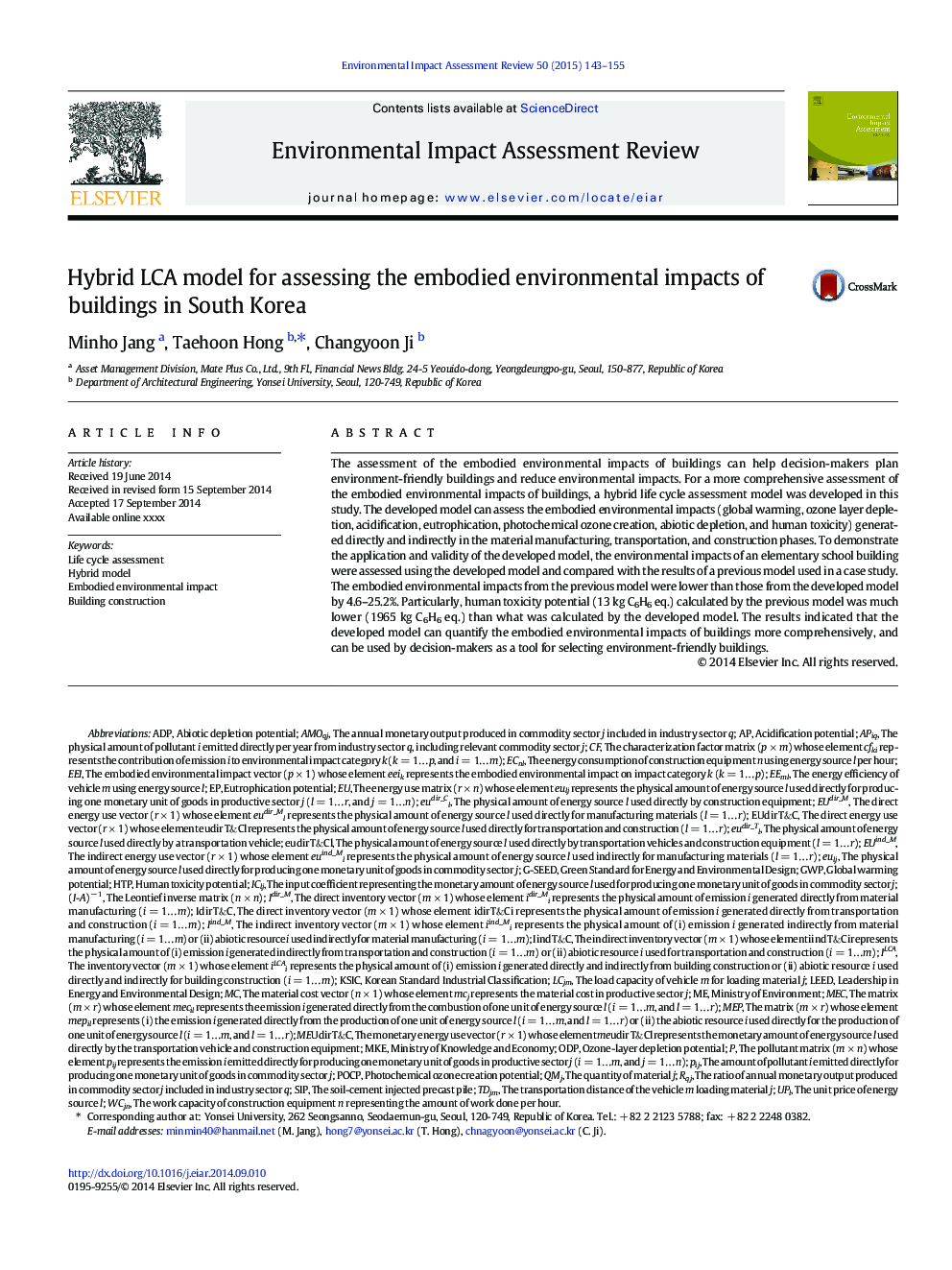| کد مقاله | کد نشریه | سال انتشار | مقاله انگلیسی | نسخه تمام متن |
|---|---|---|---|---|
| 7465430 | 1484995 | 2015 | 13 صفحه PDF | دانلود رایگان |
عنوان انگلیسی مقاله ISI
Hybrid LCA model for assessing the embodied environmental impacts of buildings in South Korea
دانلود مقاله + سفارش ترجمه
دانلود مقاله ISI انگلیسی
رایگان برای ایرانیان
کلمات کلیدی
GWPEmbodied environmental impactPOCPEEILEEDUPLSIPADPMEPMECHTPODP - RIPLife Cycle Assessment - ارزیابی چرخه عمر یا چرخه حیاتLeadership in Energy and Environmental Design - رهبری در طراحی انرژی و محیط زیستBuilding construction - ساخت و ساز ساختمانHybrid model - مدل ترکیبیAcidification Potential - پتانسیل اسیدی شدنPhotochemical Ozone Creation Potential - پتانسیل ایجاد اوزون Photochemicalhuman toxicity potential - پتانسیل سمیت انسانglobal warming potential - پتانسیل گرمایش جهانیEutrophication potential - پتانسیل یوتروفیزیکیAbiotic Depletion Potential - پدیده تخریب ابیوتیک
موضوعات مرتبط
مهندسی و علوم پایه
مهندسی انرژی
انرژی های تجدید پذیر، توسعه پایدار و محیط زیست
پیش نمایش صفحه اول مقاله

چکیده انگلیسی
The assessment of the embodied environmental impacts of buildings can help decision-makers plan environment-friendly buildings and reduce environmental impacts. For a more comprehensive assessment of the embodied environmental impacts of buildings, a hybrid life cycle assessment model was developed in this study. The developed model can assess the embodied environmental impacts (global warming, ozone layer depletion, acidification, eutrophication, photochemical ozone creation, abiotic depletion, and human toxicity) generated directly and indirectly in the material manufacturing, transportation, and construction phases. To demonstrate the application and validity of the developed model, the environmental impacts of an elementary school building were assessed using the developed model and compared with the results of a previous model used in a case study. The embodied environmental impacts from the previous model were lower than those from the developed model by 4.6-25.2%. Particularly, human toxicity potential (13Â kg C6H6 eq.) calculated by the previous model was much lower (1965Â kg C6H6 eq.) than what was calculated by the developed model. The results indicated that the developed model can quantify the embodied environmental impacts of buildings more comprehensively, and can be used by decision-makers as a tool for selecting environment-friendly buildings.
ناشر
Database: Elsevier - ScienceDirect (ساینس دایرکت)
Journal: Environmental Impact Assessment Review - Volume 50, January 2015, Pages 143-155
Journal: Environmental Impact Assessment Review - Volume 50, January 2015, Pages 143-155
نویسندگان
Minho Jang, Taehoon Hong, Changyoon Ji,